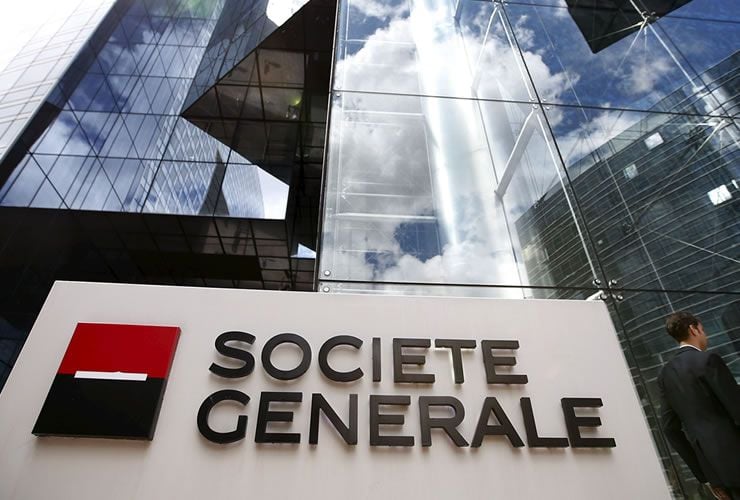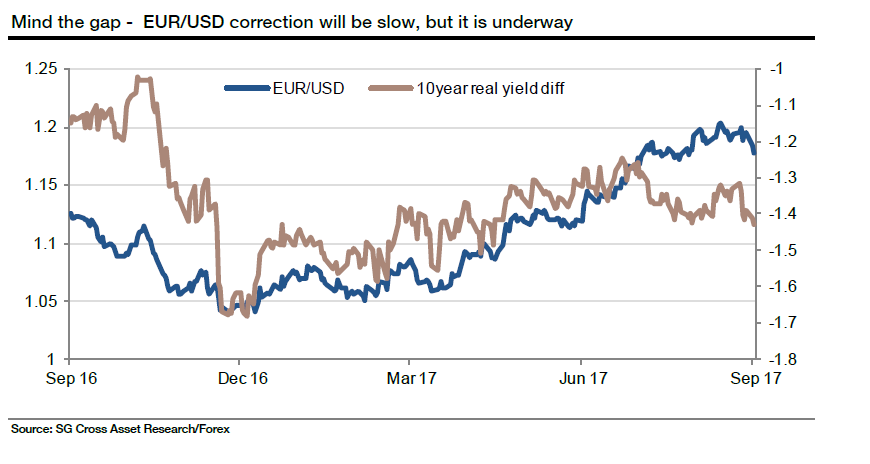Pound-to-Dollar Rate Selloff: Eyeing 1.30

The EUR/USD is dragging down GBP/USD with it and further losses are likely forecast two leading analysts.
The Pound and Euro are falling against a resurgent US Dollar which received a fresh bid overnight following a speech by Janet Yellen which showed her continued support for higher interest rates.
The Dollar has been on a losing streak over recent weeks with markets starting to bet the US Federal Reserve would shy away from raising interest rates in December owing to subdued US inflation.
Yellen's speech has however reaffirmed the Fed's committment to maintaing a steady path of interest rate rises and this has coaxed buyers back to the Dollar.
Higher interest rates tend to strengthen a currency as they attract more foreign capital inflows.
The combination of the promise of higher rates in the US, combined with an ongoing correction in the Euro, have pushed the EUR/USD exchange rate below 1.18.
And it appears Pound Sterling is being caught in the crossfire.
Kit Juckes, an analyst with Société Générale notes GBP/USD is "tied down by the Euro-correction," and suggests the move can extend.
"If the EUR/USD correction is alive and well, then short GBP/USD is an attractive short-term bet," says Juckes.
Why the Euro can Fall Further (and thus the Pound)
The fluctuation of interest rates matter for global currencies.
More specifically the difference in interest rates on offer in two currency jurisdictions - in this case in the Eurozone and the US - matter as capital will flow to where the better return is offered.
The graph below encapsulates the concept:

As can be seen, the EUR/USD tends to follow the yield differential between Euro (usually German bunds used as a proxy) and US ten year bonds.
These are ultimately influenced by central bank policy, hence why moves at the European Central Bank and Federal Reserve matter.
What is striking is that since July 2017 the relationship between EUR/USD and the bond yield differential - or spread as its called in the markets - has broken down.
The inference is that EUR/USD will follow the spread lower.
Analysts don't solely look at the difference between 10-year government bond yields for clues as to the currency pair's future moves, they look at the difference in interest rates between debt instruments of a variety of maturities - sometimes the 2-year or even shorter, depending on the timeframe they are analyzing.
Juckes notes, for example, how the spread between Euro 3-month debt and US 2-year has widened (due no doubt to mounting December Fed hike expectations) to the spread it commanded when EUR/USD was only at 1.10.
"The most encouraging fact for EUR/USD bears is that with the market now pricing a 70% chance of a December Fed rate hike, the futures market is pricing a near-2% gap between 3- month rates in euro and dollars in 2 years’ time.
"That’s similar to what was being priced in the spring, when EUR/USD was trading at around 1.10. It isn’t realistic to expect EUR/USD 1.10 to be revisited any time soon but a further correction seems likely, closing some of the (clearly visible) gap in recent trends in rates and currency," said Juckes.
Again the inference of all this is that EUR/USD will depreciate.
How Far will GBP/USD Go?
So with EUR/USD possibly going lower, how much damage can Sterling expect?
Juckes sees a high chance of GBP/USD following suit:
"Ideally, I would like to be short GBP/USD at about the same time as the UK rates market prices a better than 50% chance that we will see two rate hikes in the coming months. At the moment, the market doesn’t price a second hike as ‘more likely than not’ until next May.
"The problem with that is that the dollar bounce is likely to happen now, or not at all.
"So timing isn’t perfect but even so, as we drift below 1.34 in GBP/USD, the August spike to 1.3270 is the next obvious target. After that, talk of a return to 1.30 will start."
The view is backed by technical analyst Shaun Osborne at Scotiabank who says a short-term top in Sterling-Dollar appears to have formed.
"GBPUSD has performed more strongly than expected over the past two weeks following a sharp pick up in momentum from the 1.30 area through the 40-day MA. Near-term risks are perhaps turning a little lower for the GBP again, however," says Osborne in a note to clients dated September 27.
The Scotiabank analyst thinks Cable risks tilting somewhat lower in the next few weeks and notes short-term retracement support at 1.3306 and 1.3206 which bracket the early August peak at 1.3267.
Get up to 5% more foreign exchange by using a specialist provider by getting closer to the real market rate and avoid the gaping spreads charged by your bank for international payments. Learn more here.
